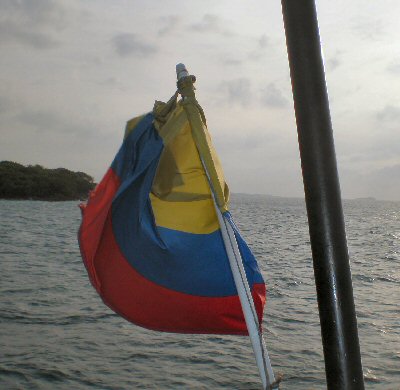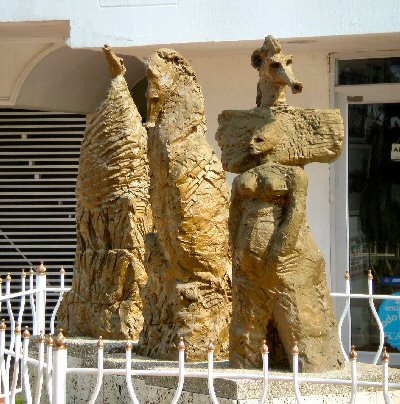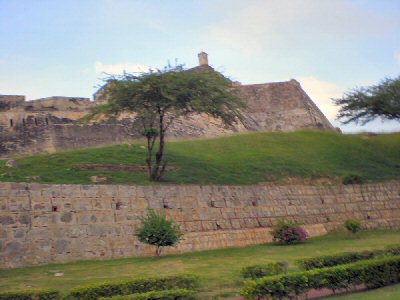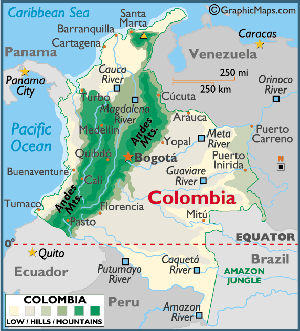Columbia
2010




| Location: | 04º 38' N, 74º 05' W |
| Population: | 42,954,279 |
| Area: | (land) 401,044 sq miles (1,038,700 sq km) (water) 38,691 sq miles (100,210 sq km) (TOTAL) 439,735 sq miles (1,138,910 sq km) |
| Climate: | In
general terms, weather conditions are hot and humid along the coastal
areas, and below (1,000 m) in elevation; somewhat mild (1,000
- 2,000 m), and quite cold (2,000 meters, and above). The
hottest months are March and April; coldest months are July and August.
  As an elevation example, Bogota is over (2,500 m) in elevation,
and average summer high temperatures approach 78° F, while in the lower
eastern elevations, summer high temperatures soar into the high 90s.
As an elevation example, Bogota is over (2,500 m) in elevation,
and average summer high temperatures approach 78° F, while in the lower
eastern elevations, summer high temperatures soar into the high 90s.  Precipitation is generally moderate to heavy, with highest levels in the
Pacific lowlands and in parts of northeastern Colombia. Most rainfall
occurs from (March - May) and from (September - November).
Precipitation is generally moderate to heavy, with highest levels in the
Pacific lowlands and in parts of northeastern Colombia. Most rainfall
occurs from (March - May) and from (September - November).
|
| Terrain: | Fronted
by the Caribbean and Pacific lowlands, as well as the eastern Amazon
lowlands that extend to its borders with Brazil and Venezuela, the
western third of Colombia is crossed by three rugged parallel ranges of
the Andes Mountains, namely the Eastern, Central, and Western
Cordilleras.  Many rivers rise in the upper elevations of the Andes, and the most
significant include the Cauca, Magdalena and Putumayo. The Cauca and
Magdalena (which flow northward) separate the three principal Andean
mountain ranges, eventually merging and then ending in the Caribbean
Sea.
Many rivers rise in the upper elevations of the Andes, and the most
significant include the Cauca, Magdalena and Putumayo. The Cauca and
Magdalena (which flow northward) separate the three principal Andean
mountain ranges, eventually merging and then ending in the Caribbean
Sea. |
| Elevation: |
Highest Pt. Cristobal Colon - 18,947 ft. (5,775 m)  |